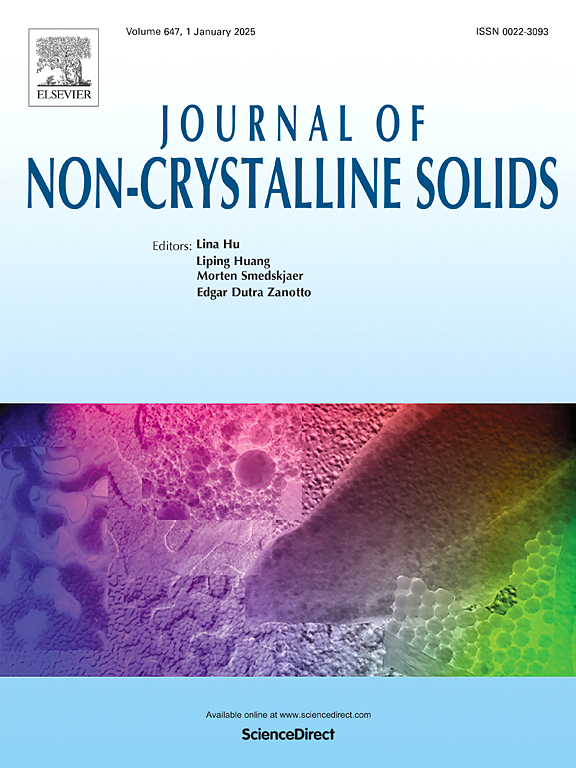From SiO1.5CH3 to vitreous SiO2: A structural evolution study
IF 3.2
3区 材料科学
Q1 MATERIALS SCIENCE, CERAMICS
引用次数: 0
Abstract
The conversion of SiO1.5CH3 into SiO2 glass by pyrolysis in air has been studied by combining density measurements, vibrational spectroscopy, positron annihilation spectroscopy, and nuclear magnetic resonance. The results show that a critical transition takes place between 400 and 500 °C and at 600 °C the organic features are completely removed. The conversion of the hybrid structure into a fully inorganic network takes place through the formation of metastable 3-membered rings that progressively evolve into more stable 5+ rings as the pyrolysis temperature increases. The evolution of the organic moieties is coupled with the formation of Si-OH and molecular water trapped in the network which are well visible between 500 and 800 °C. In such temperature regions, a clear evolution of the network density can be detected, though the amount of free volume is nearly constant (due to the presence of trapped H2O). Only at 1250 °C, the network is comparable with a melt-derived glass.
从 SiO1.5CH3 到玻璃状 SiO2:结构演变研究
通过结合密度测定、振动光谱、正电子湮灭光谱和核磁共振,对 SiO1.5CH3 在空气中热解转化为 SiO2 玻璃的过程进行了研究。结果表明,在 400 至 500 °C 之间发生了临界转变,600 °C 时有机特征完全消失。杂化结构转化为完全无机网络的过程中形成了可褪色的三元环,随着热解温度的升高,这些三元环逐渐演变为更稳定的五元环。有机分子的演化与网络中截留的 Si-OH 和分子水的形成密切相关,这在 500 至 800 °C 之间非常明显。在这些温度区域,虽然自由体积几乎保持不变(由于存在被截留的 H2O),但可以检测到网络密度的明显变化。只有在 1250 °C 时,网络才能与熔融衍生玻璃相媲美。
本文章由计算机程序翻译,如有差异,请以英文原文为准。
求助全文
约1分钟内获得全文
求助全文
来源期刊

Journal of Non-crystalline Solids
工程技术-材料科学:硅酸盐
CiteScore
6.50
自引率
11.40%
发文量
576
审稿时长
35 days
期刊介绍:
The Journal of Non-Crystalline Solids publishes review articles, research papers, and Letters to the Editor on amorphous and glassy materials, including inorganic, organic, polymeric, hybrid and metallic systems. Papers on partially glassy materials, such as glass-ceramics and glass-matrix composites, and papers involving the liquid state are also included in so far as the properties of the liquid are relevant for the formation of the solid.
In all cases the papers must demonstrate both novelty and importance to the field, by way of significant advances in understanding or application of non-crystalline solids; in the case of Letters, a compelling case must also be made for expedited handling.
 求助内容:
求助内容: 应助结果提醒方式:
应助结果提醒方式:


